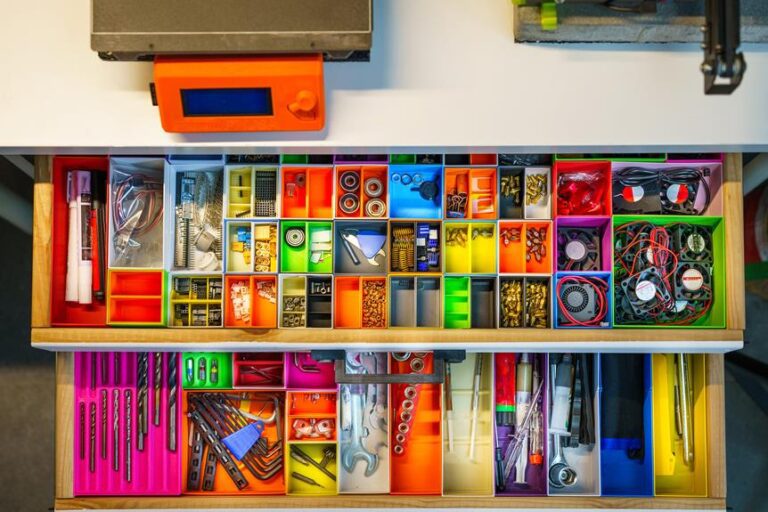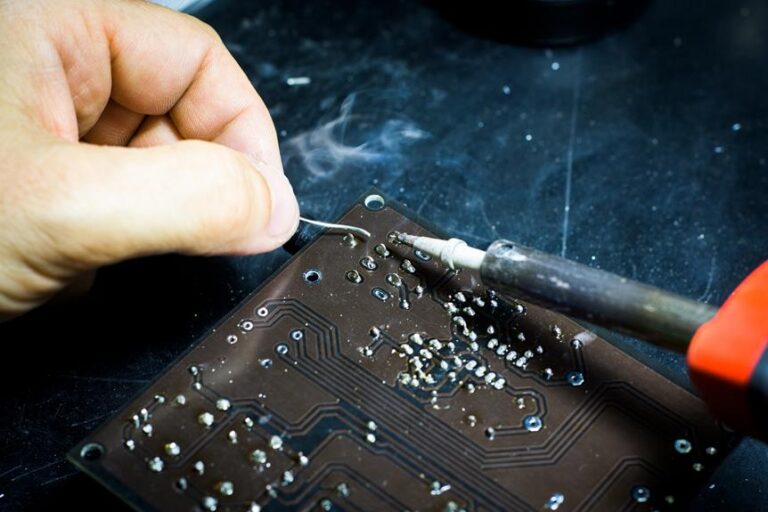AI and Machine Learning in 3D Printing: Shaping the Future
As the world of 3D printing continues to evolve, a new frontier is emerging through the integration of artificial intelligence (AI) and machine learning. This dynamic pairing promises to shape the future of 3D printing by revolutionizing design, production processes, and quality control.
By harnessing the power of AI and machine learning, the possibilities for innovation and efficiency in 3D printing are limitless. Join us as we explore the transformative impact of AI and machine learning in the realm of 3D printing, paving the way for a liberated and groundbreaking future.
Key Takeaways
- AI and machine learning have revolutionized the capabilities and efficiency of 3D printing.
- These technologies have enabled automated and intelligent decision-making processes, optimizing design, material selection, and production.
- AI-powered 3D printing technologies adjust parameters in real-time for higher quality prints, generate complex geometries, and optimize structures.
- Machine learning enhances design and prototyping by analyzing vast amounts of data, exploring design alternatives, and optimizing internal structures for lightweight and high-strength designs.
The Role of AI and Machine Learning in 3D Printing
The integration of AI and machine learning in the field of 3D printing has revolutionized the capabilities and efficiency of this technology. AI and machine learning algorithms have significantly advanced the field of 3D printing by enabling automated and intelligent decision-making processes. These technologies have transformed the traditional manufacturing process by optimizing various aspects such as design, material selection, and production.
AI and machine learning algorithms have been employed to optimize the printing process by analyzing and interpreting design specifications. These algorithms can identify potential design flaws and make real-time adjustments to improve the overall quality and accuracy of the printed object. Additionally, AI algorithms can analyze vast amounts of data to identify patterns and optimize printing parameters, resulting in improved printing speed and reduced waste.
Furthermore, AI and machine learning have also facilitated the use of advanced materials in 3D printing. By analyzing material properties and printing parameters, these algorithms can determine the most suitable materials for specific applications, maximizing the strength, durability, and functionality of the printed objects. This has opened up new possibilities in various industries, including aerospace, healthcare, and automotive.
In the construction industry, AI and machine learning have played a crucial role in advancing 3D printing technology. These technologies have enabled the creation of complex and intricate architectural designs, optimizing material usage, and reducing construction time. With the integration of AI and machine learning, 3D printing in construction has the potential to revolutionize the industry by offering faster, cost-effective, and sustainable construction methods.
Advancements in AI-powered 3D Printing Technologies
Advancements in AI-powered 3D printing technologies have revolutionized the capabilities and potential of this innovative manufacturing process. These advancements have enabled the integration of artificial intelligence and machine learning algorithms into 3D printers, allowing for improved precision, efficiency, and customization in the production of objects.
One key advancement is the use of AI algorithms to optimize the printing process itself. By analyzing data from various sensors and feedback mechanisms, AI-powered 3D printers can adjust parameters such as temperature, speed, and material composition in real-time, resulting in higher quality prints and reduced wastage.
Additionally, AI algorithms can assist in the design phase by generating complex geometries and optimizing structures for specific functionalities. By leveraging machine learning techniques, these algorithms can analyze vast amounts of data and identify patterns that human designers may overlook. This leads to the creation of innovative and optimized designs that were previously unattainable.
Furthermore, AI-powered 3D printers can learn from each print job, continuously improving their performance over time. By capturing data on printing outcomes and comparing it to design specifications, these printers can identify areas of improvement and adjust their parameters accordingly. This iterative learning process enhances the overall quality and reliability of the printing process.
Enhancing Design and Prototyping With Machine Learning
One significant way machine learning enhances design and prototyping in 3D printing is by enabling the generation of complex geometries and optimized structures for specific functionalities. This technology leverages the power of artificial intelligence to analyze vast amounts of data and learn from it to create innovative designs that were previously unimaginable.
Here are two key ways in which machine learning enhances design and prototyping in 3D printing:
- Generative Design: Machine learning algorithms can generate design alternatives based on specified parameters and constraints. By inputting factors such as material properties, manufacturing limitations, and desired performance, the algorithm can explore an extensive range of possibilities to generate optimized designs. This allows designers to quickly iterate through multiple design options, saving time and effort while ensuring the best possible outcome.
- Topology Optimization: Machine learning algorithms can optimize the internal structure of 3D-printed objects, known as topology optimization. By analyzing stress and strain patterns, machine learning algorithms can identify the most efficient distribution of material within an object, leading to lightweight and high-strength designs. This not only improves the overall performance of the printed object but also reduces material waste and production costs.
Optimizing Production Processes Through AI in 3D Printing
Several innovative ways exist to optimize production processes through AI in 3D printing, as it enables faster and more efficient manufacturing. AI algorithms can be employed to analyze complex manufacturing data and identify patterns, allowing for predictive maintenance and minimizing downtime. By continuously monitoring and analyzing data from 3D printers, AI can detect potential issues in real-time and alert operators, enabling proactive maintenance and reducing the risk of production delays.
Furthermore, AI can optimize the printing process itself by dynamically adjusting parameters such as print speed, temperature, and material usage. Through machine learning, AI can learn from previous printing jobs and improve its decision-making capabilities, resulting in higher print quality and reduced material waste. This not only increases productivity but also lowers production costs.
AI can also assist in optimizing the production workflow by automating tasks such as file preparation, scheduling, and quality control. By streamlining these processes, AI can significantly reduce the time and effort required for production, enabling faster turnaround times and increased output.
AI-driven Quality Control in 3D Printing
With the integration of AI, quality control in 3D printing can be significantly enhanced. AI-driven quality control systems utilize advanced algorithms and machine learning techniques to monitor and analyze the printing process in real-time. This ensures that the final products meet the required standards and specifications.
Here are two sub-lists that delve deeper into the benefits and challenges of AI-driven quality control in 3D printing:
Benefits:
- Increased accuracy: AI algorithms can detect even the smallest defects or imperfections in the printed objects, ensuring a higher level of precision and quality.
- Reduced waste: By continuously monitoring the printing process, AI systems can identify potential errors early on, minimizing material wastage and saving costs.
Challenges:
- Data collection and analysis: Implementing an AI-driven quality control system requires a large amount of data to train the algorithms. Collecting, organizing, and analyzing this data can be a complex and time-consuming process.
- Integration with existing workflows: Integrating AI systems into existing 3D printing workflows may require adjustments and modifications to ensure seamless operation and compatibility.
Revolutionizing Supply Chain Management With Machine Learning
The utilization of machine learning in supply chain management has the potential to revolutionize the industry by enhancing efficiency and optimizing processes.
Machine learning algorithms can analyze large amounts of data to identify patterns, predict demand, and optimize inventory management, resulting in cost savings and improved customer satisfaction.
One key area where machine learning can have a significant impact is demand forecasting. By analyzing historical sales data, market trends, and external factors such as weather, machine learning algorithms can accurately predict future demand, enabling companies to optimize their production and inventory levels. This can help reduce inventory costs and prevent stockouts or overstock situations.
Machine learning can also improve transportation and logistics management by optimizing delivery routes, reducing fuel consumption, and minimizing delivery delays. By analyzing real-time data such as traffic conditions and weather, machine learning algorithms can suggest the most efficient routes and dynamically adjust schedules to minimize disruptions.
Additionally, machine learning can enhance supplier management by analyzing supplier performance data, identifying potential risks, and suggesting alternative suppliers if necessary.
Future Possibilities: AI and Machine Learning in 3D Printing
Continuously evolving AI and machine learning technologies hold the potential to revolutionize the field of 3D printing, opening up a world of exciting future possibilities. As these technologies continue to advance, the following future possibilities emerge:
- Enhanced Design Optimization: AI and machine learning can analyze vast amounts of data to optimize designs for 3D printing, taking into account factors such as material properties, structural integrity, and manufacturing constraints. This can lead to the creation of more efficient and lightweight designs, reducing material waste and improving overall performance.
- Real-time Monitoring and Quality Control: By employing AI and machine learning algorithms, it becomes possible to monitor 3D printing processes in real-time, detecting anomalies and ensuring quality control. These technologies can analyze data from sensors and cameras to identify potential defects, enabling immediate intervention and reducing the risk of printing failures.
- Automated Material Selection: AI and machine learning algorithms can analyze the properties and characteristics of different materials, enabling automated selection of the most suitable material for a specific printing job. This can save time and resources by eliminating the need for manual material selection and testing.
- Predictive Maintenance: AI and machine learning can predict when 3D printers will require maintenance or replacement of components by analyzing historical data and identifying patterns. This proactive approach can reduce downtime and increase the lifespan of 3D printing equipment.
- Collaborative Design: AI and machine learning can facilitate collaborative design processes by enabling multiple users to work together in real-time, regardless of their geographical location. This can lead to more efficient design iterations and foster creativity and innovation.
- On-demand Manufacturing: With the integration of AI and machine learning in 3D printing, it becomes possible to automate the entire manufacturing process, from design to production. This enables on-demand manufacturing, where products can be customized and manufactured quickly and efficiently, reducing inventory costs and waste.
These future possibilities demonstrate the transformative potential of AI and machine learning in the field of 3D printing, paving the way for more efficient, sustainable, and flexible manufacturing processes.
Frequently Asked Questions
Can AI and Machine Learning Be Used in 3D Printing to Create Complex and Intricate Designs?
Yes, AI and machine learning can be used in 3D printing to create complex and intricate designs. These technologies enable intelligent algorithms to analyze data and optimize printing processes, resulting in the production of highly detailed and customized objects.
How Does Ai-Powered 3D Printing Technology Contribute to Reducing Production Time and Costs?
AI-powered 3D printing technology significantly reduces production time and costs by optimizing design processes, automating complex tasks, and improving material usage. This transformative technology revolutionizes manufacturing, enabling businesses to achieve greater efficiency and competitiveness.
What Are the Challenges and Limitations of Using Machine Learning in Enhancing Design and Prototyping in 3D Printing?
The challenges and limitations of using machine learning in enhancing design and prototyping in 3D printing include data quality, lack of standardization, complex algorithms, and the need for expert knowledge in training the models.
How Can AI Optimize Production Processes in 3D Printing, and What Benefits Does It Offer Over Traditional Manufacturing Methods?
AI can optimize production processes in 3D printing by leveraging machine learning algorithms to analyze data and make informed decisions. This offers benefits over traditional manufacturing methods, such as improved efficiency, reduced costs, and the ability to create complex designs.
What Are the Potential Applications of Machine Learning in Quality Control for 3D Printing, and How Can It Improve the Overall Printing Process?
Machine learning has the potential to revolutionize quality control in 3D printing by enabling real-time monitoring, defect detection, and process optimization. This can lead to improved print accuracy, reduced waste, and enhanced overall efficiency in the printing process.
Conclusion
In conclusion, the integration of AI and machine learning in 3D printing has paved the way for significant advancements in various aspects of the technology.
From enhancing design and prototyping to optimizing production processes and revolutionizing supply chain management, these technologies have demonstrated their potential to shape the future of 3D printing.
With continued research and development, the possibilities for further innovation and improvement in this field are virtually limitless.
As the saying goes, 'the sky's the limit,' and the same can be said for the future of AI and machine learning in 3D printing.









